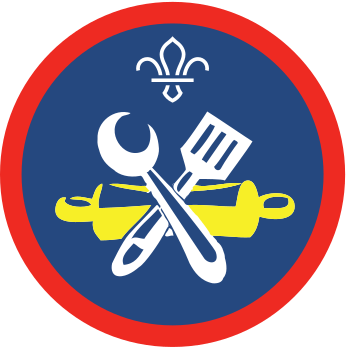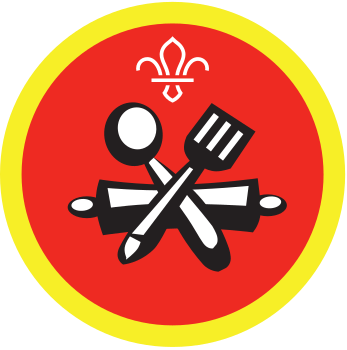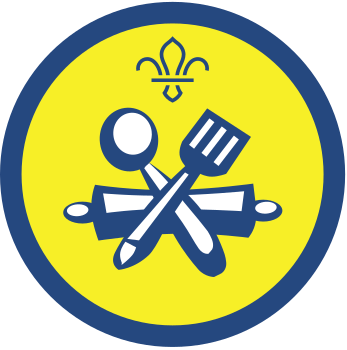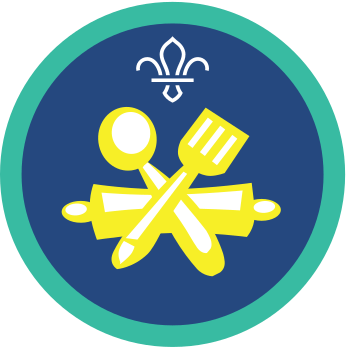
Make festive chocolate truffles
You’ll need
- Microwave
- Pans
- Stove
- Heatproof bowls
- Decorations including fondant and cutters (see individual designs for their requirements)
Before you begin
- Use the safety checklist to help you plan and risk assess your activity. Take a look at our guidance to help you carry out your risk assessment, including examples.
- Make sure all young people and adults involved in the activity know how to take part safely.
- Make sure you’ll have enough adult helpers. You may need some parents and carers to help if you’re short on helpers.
- Check for allergies, intolerances, fasting, food-related medical conditions, eating disorders, food sensitivities or dietary requirements, then adjust the food items used as needed. This may include making sure there’s no cross-contamination of packaging and no cross-contamination during the storage, preparation, cooking and serving.
- You may need to use separate chopping boards, equipment and utensils, such as tongs or toasters, for different dietary requirements, allergies and foods.
- If you’re unsure, check with the young person and their parents or carers. You can check with the adult directly if it’s a volunteer or helper.
- Some people may not like certain food textures or tastes and that’s OK. People don’t need to use all the ingredients if they don’t want to, and no-one should be made to try foods if they don’t want to. You can try to find an alternative for them.
- Take a look at our guidance on food preparation.
- You could run our kitchen hygiene activities before this session.
- Always have a hand washing station, washing hands regularly throughout this activity, and taking extra hygiene precautions when handling food. If you're using gloves to prepare food, treat them like your hands. Wash any gloves before using them and in between if necessary.
- Spray and wipe down all working surfaces and tables with anti-bacterial spray before and after use, and wash any equipment you’re using in hot soapy water.
- Take extra hygiene precautions when handling raw meat, such as regular hand washing.
- Keep raw and ready-to-eat foods separate, having separate equipment for raw and cooked meat, and washing up equipment as soon as it's been used.
- Make sure food is properly cooked before you serve it. Always cut through poultry and meat to make sure it's fully cooked, especially when barbecuing food. Make sure it's cooked slowly and thoroughly, and not just done on the outside.
- Always follow cooking instructions and never use food past its use-by date.
- Keep food out of the fridge for the shortest time possible.
- At the start of this activity, remind everyone of kitchen or indoor cooking safety rules and how to act safely. Always tie hair back, tuck in neckers and loose clothing, and wear closed toe shoes. Take a look at our kitchen safety tips.
- You may want to run a demonstration on how to use the equipment safely, such as for cooking or chopping ingredients. You could use our kitchen safety activities before this session.
- Make sure any cooking equipment or heat sources, such as ovens and hobs, always have adult supervision, including during free time and arrival times. If anyone struggles with sensing danger, you should consider providing extra adult supervision. This could be especially helpful at unstructured times, such as breaks or waiting to cook.
- Remind everyone to keep their fingers away from any knives. You may want to use blunt, child-friendly knives, or you could also have ingredients pre-chopped.
- If you’re using a gas stove, tabletop hob plates or a mini oven, make sure it’s on a stable heatproof surface and in a clear and open area, with plenty of ventilation. Gas appliances and sources can increase risk of carbon monoxide exposure. Take a look at our guidance on different cooking methods and carbon monoxide.
- You may want to put child-safe locks on cupboard doors to prevent access by young people, especially for cupboards containing matches, cleaning products or chemicals.
- People can work in small groups or as a whole group to bake or cook. Each group should have adult supervision.
- You may want to be in groups, but everyone to use the same cooking source, rather than having each group have their own.
- You may wish for groups to make or prepare the ingredients in a wider, more spacious area, then invite each group into the kitchen to cook one at a time.
- Remember the groups not using the kitchen or cooking will still need to be supervised, always following the Yellow Card.
- Make sure you have all the ingredients ready. You may want to pre-chop or pre-measure some activities.
Ingredients:
Instructions:
- Melt some white chocolate. You can do this using either a double boiler (a glass bowl over a pan of simmering water) or a microwave (melt in 15 second intervals and stir in between).
- Top your truffles with a small dollop of white chocolate. Leave to cool.
- Using green fondant, roll out a piece until it is 5mm thick, then cut out the shape of a holly leaf.
- Place the holly on top of the white chocolate to create a Christmas pudding truffle.
Ingredients:
- White chocolate
- Orange fondant (or similar)
- Desiccated coconut
- Pretzels (broken into halves)
- Toothpicks
Instructions:
- When making your truffles for this design, consider rolling them into two different sizes: a larger one for the body of the snowman and a smaller one for the head.
- Melt some white chocolate. You can do this using either a double boiler (a glass bowl over a pan of simmering water) or a microwave (melt in 15 second intervals and stir in between).
- Empty some desiccated coconut into a bowl.
- Use a fork to dip a truffle completely into the chocolate, and then roll in the coconut. Leave to cool.
- Take two truffles and stack them on top of each other, securing with a toothpick, to make the body and head of the snowman.
- Using pretzels, add two arms to the snowman. Roll some orange fondant into a small cone to give him a carrot nose.
Ingredients:
- Milk or dark chocolate
- Round red sweets (or similar)
- Pretzels (broken into halves)
Instructions:
- Melt some chocolate. You can do this using either a double boiler (a glass bowl over a pan of simmering water) or a microwave (melt in 15 second intervals and stir in between).
- Use a fork to dip a truffle completely into the chocolate. Leave to cool.
- Decorate with two pretzel halves for the antlers and a red sweet for the nose.
Ingredients:
- White chocolate
- Candy canes
- Sandwich bags
- Rolling pin
Instructions:
- Melt some white chocolate. You can do this using either a double boiler (a glass bowl over a pan of simmering water) or a microwave (melt in 15 second intervals and stir in between).
- Place a candy cane in a sandwich bag and crush it using a sturdy object (such as a rolling pin). Once it has been crushed into a consistency like sprinkles, empty into a bowl.
- Use a fork to dip a truffle completely into the chocolate and then roll in the crushed candy cane. Leave to cool.
Reflection
This activity was about developing skills and being creative with how we present food. What makes our food appealing? Discuss how the decorations that you have available could help you make other themed truffles. What challenges did you find while decorating your truffles? What changes to the recipe can you make to accommodate people who may not eat certain ingredients, like chocolate?
Safety
All activities must be safely managed. You must complete a thorough risk assessment and take appropriate steps to reduce risk. Use the safety checklist to help you plan and risk assess your activity. Always get approval for the activity, and have suitable supervision and an InTouch process.
- Cooking
Teach young people how to use cooking equipment safely. Supervise them appropriately throughout. Make sure it’s safe to use and follow manufacturers’ guidelines for use.
- Fires and stoves
Make sure anyone using fires and stoves is doing so safely. Check that the equipment and area are suitable and have plenty of ventilation. Follow the gas safety guidance. Have a safe way to extinguish the fire in an emergency.
- Food
Remember to check for allergies, eating problems, fasting or dietary requirements and adjust the recipe as needed. Make sure you’ve suitable areas for storing and preparing food and avoid cross contamination of different foods. Take a look at our guidance on food safety and hygiene.
- Flammable items
Always take care when using flammable items, especially if you’re near fire. Always follow the manufacturer’s instructions and guidelines.
The person running the activity may need to melt the chocolate and prepare the decorations for the participants to construct the final product.
Check the allergy requirements of your group and ensure that any potential allergens are either removed or replaced with inclusive alternatives. Consider using vegan alternatives for the ingredients to make the final product as inclusive as possible.
All Scout activities should be inclusive and accessible.
Our brigadeiro recipe is a fantastic base to make treats that can be themed for any occasion or season. It doesn’t require an oven, and therefore can be made while at camp or cooking on Trangias.
Get everyone involved in choosing which designs they would like to make.



